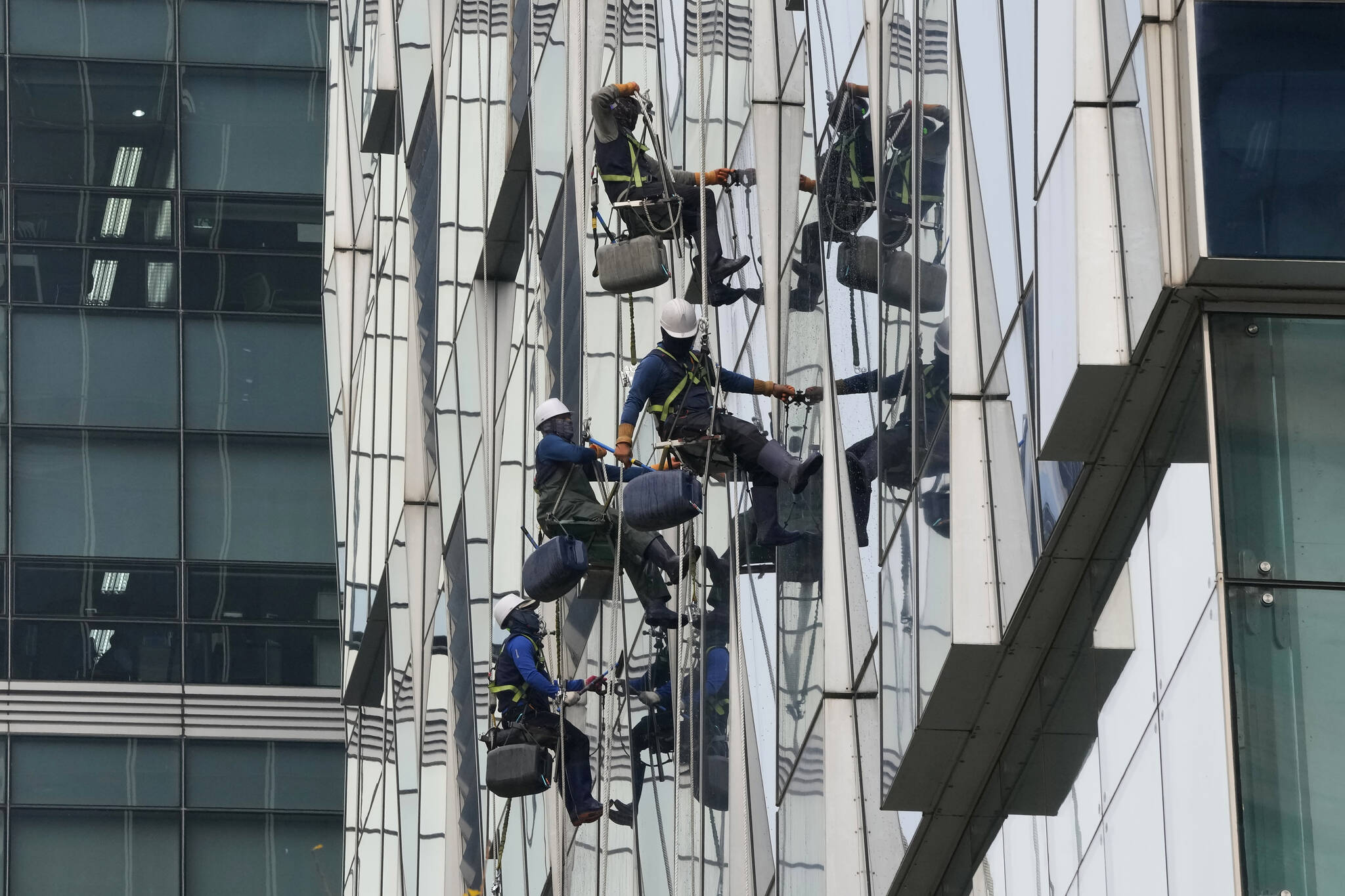When workers head back to the office in the coming months, the spaces might look similar to how they were left when the pandemic began in March 2020.
But flicking on a light switch, visiting the washroom or even heading to another floor could reveal a slew of issues missed amid the health crisis.
“When something small goes wrong, like a sink overflows or leaks … it gets noticed like right away probably 99 per cent of the time … but because these buildings are empty, or almost empty, there’s not nearly as many eyes to catch those things,” said Jim Mandeville, senior project manager at property restorer First Onsite.
Mandeville expects everything from burned out light bulbs to malfunctioning elevators to become issues as Canada plots a return to pre-pandemic conditions, including working from the office.
That return to spaces Canadians retreated from will remind people that dormant buildings or ones that saw few visitors for months or years can be like a petri dish.
Stagnant liquids that remained in mugs or toilets, dripped from leaky faucets or pooled around windows are a haven for germs, a breeding ground for mould and even a trigger for legionnaires’ disease, a respiratory infection caused by breathing in bacteria.
“A lot of people thought we’d be back in a few weeks, so cream got left in refrigerators and things got left on people’s desk,” said Mandeville.
“That can create a real mess.”
Electrical issues, clogged or frozen pipes and jammed doors can also pose safety threats, if they were unnoticed by people only entering buildings for cursory checks or to retrieve items needed for remote work.
Mandeville expects problems to crop up mostly at smaller properties without a maintenance crew or diligent owner, but there will be tasks and considerations for those running large buildings too.
They’ll be contending with provinces using staged approaches to drop COVID-19 safety measures like occupancy restrictions and vaccination passports.
Such changes combined with the difficulties of predicting how many people will head into work or are comfortable visiting a business are keeping RioCan Real Estate Investment Trust busy.
“You have to act as though anyone and everyone could show up at one point, so you have to make sure that the entirety of each of these buildings is kept in very good shape from a health and safety perspective,” said Jonathan Gitlin, chief executive of the commercial real estate company.
While the company may soon be able to stop enlisting security crews to check vaccine passports and manage lines, frequent cleanings dovetailed with an obsession around air quality aren’t going away.
Kevin Hardy, the vice-president and head of Oxford Properties Group’s Eastern Canada office, agreed.
“The average occupant of our buildings didn’t care what type of filter we used two years ago, and now everybody knows what a MERV 13 or a HEPA filter is,” he said, referencing terms used to describe the efficiency of air filters.
His team is exploring implementing a real-time dashboard tenants can use to find out the air quality in their spaces.
Oxford is also keeping handy fact sheets with information on how frequently everything from elevator buttons to bathrooms are cleaned in its more than 14.9 million square metres of commercial real estate.
Regardless of whether you have a property manager or maintenance crew, Mandeville recommends company leaders inspect working spaces before sending in staff and urges them to look at every nook and cranny.
“When you’re looking for things that are wrong, especially potential water intrusions or potential mould problems, those things are almost always going to be where the floor meets the wall, where the wall meets the ceiling and around windows and doors or around plumbing fixtures,” he said.
If you find a problem, don’t expect a quick or cheap fix, he warns.
“Chances are you’re not going to be able to fix it today or tomorrow, because with COVID getting materials and parts is a disaster right now,” he said.
—Tara Deschamps, The Canadian Press

